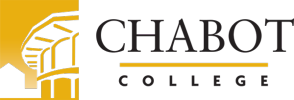
Geographic Information Systems
This program map from the 2024-2025 catalog year represents one possible pathway to complete this program. Your pathway may vary depending on your transfer plans and also previous college credit, including AP Test scores, concurrent enrollment courses and high school articulated courses.
I'm ready to get started. What do I do next?
- Review this program map to get an overview of the required courses
- Meet with a counselor to develop your customized student education plan www.chabotcollege.edu/counseling
- Use DegreeWorks, an online student education planning tool, to track your progress toward graduation www.chabotcollege.edu / admissions / degreeworks
Geographic Information Systems (GIS) is a computer system which uses data to create modern graphics and maps. These maps are interactive with clickable layers that can be used to identify problems and solutions for an organization. The GIS Certificate is for those both new to and experienced in the GIS field who want to develop knowledge of the fundamental concepts and practice of Geographic Information Systems (GIS) and learn hands-on problem-solving skills doing real-world GIS application projects.
What can I do with this major?
You will be able to apply this knowledge and hands-on skills to various fields including, but not limited to: planning, engineering, geography, criminology, real estate, biotech, public utilities, transportation, forestry, ecology, resource management, emergency response, and business/marketing. Here are some specific examples; Business: Service Routing, Business Analytics, Technology Support, Economic Development Land Administration: Public Works, Surveying, Urban/Rural Planning, Parcel Ownership Health and Human Services: E-911 Mapping, Hospitals/Health Systems, Managed Care, Public health, Environmental health and analysis, toxicology, health and safety officer Intelligence: Remote Sensing, Surveillance, Military Operations, Communications, Homeland Security, Law Enforcement Natural Resources: Agriculture, Archaeology, Climate Change, Forestry, Heritage Sites, Marine and Coastal, Water Resources, Flood Plain Mapping, Storm Damage Mitigation Public Safety: Emergency Management, Disaster Relief and Recovery, Wildfire Management, Environmental Monitoring Transportation and Infrastructure: Highways, Logistics, Ports and Maritime, Public Transportation, Railways Regional Analyst: Socio-cultural analysis, Human rights, Geospatial analysis, Communications, Tourism.
Learning and Career Pathway
- Science, Technology, Engineering, Mathematics & Environment